Contrasts and wonders
Nature reserves nestling in the landscape like enchanted oases, evocative expanses of desert, wild beaches hidden away like treasures, white villages perched on mountainsides, reminders of a rich history and the sun shining like a smile… South-eastern Spain simply dazzles with the diversity of its breathtaking beauty. Here’s a brief overview…
Tabernas desert: land of the cinema
Once upon a time in the east… Located in the centre of the province of Almeria, the Tabernas desert was captured for posterity in the 1960s when it featured in numerous Westerns, as well as in a host of epic, adventure, war and science-fiction films. With its unfailing sunshine and vast expanses of desert, torn asunder by canyons reminiscent of the American West, this semi-desert – the only one of its kind in Europe – is the backdrop for major cinematic classics that include Lawrence of Arabia, Indiana Jones and the Westerns of Sergio Leone. At its peak, the Tabernas desert was home to fourteen outdoor film studios. Now preserved, the Mini Hollywood and Fort Bravo Western villages are open to the public. In this historical setting, film buffs and desert lovers are invited to enjoy an unforgettable experience in the wild west
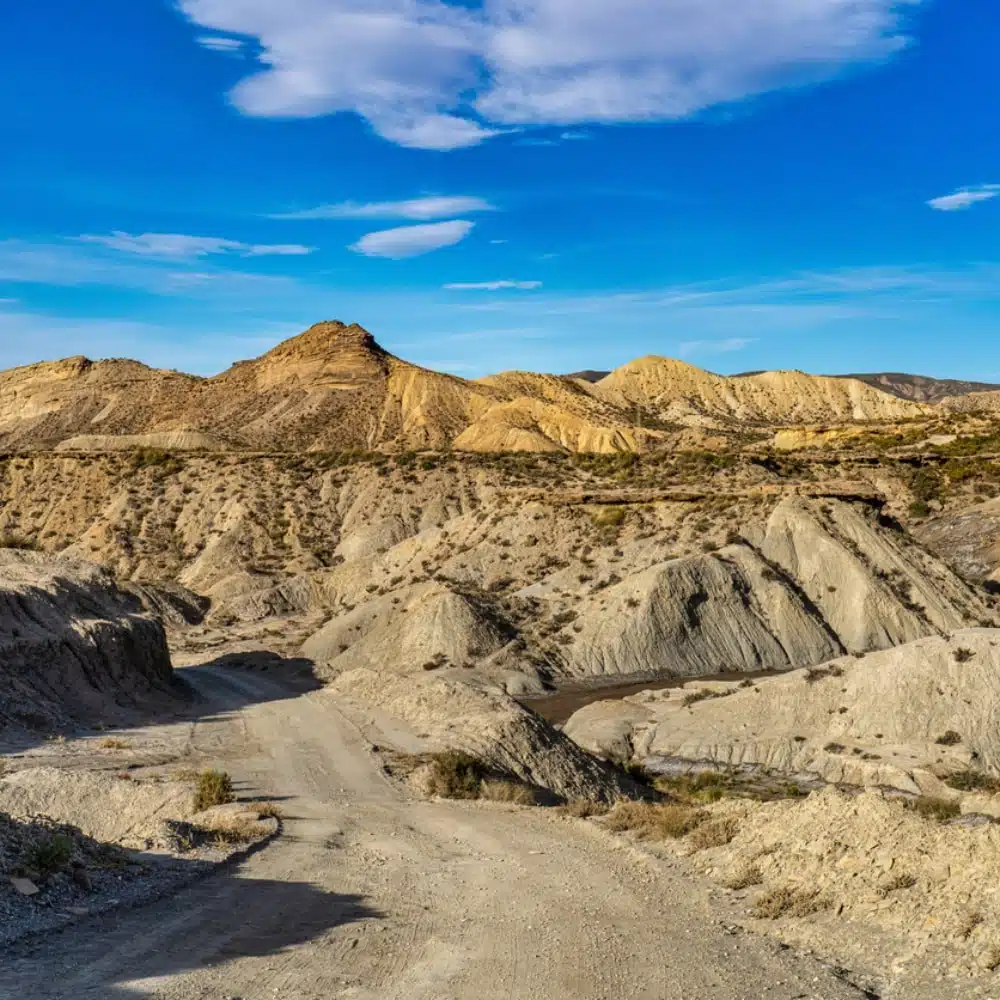
Cabo de Gata: where the desert plunges into the sea
At Cabo de Gata, the lowest point in eastern Spain located opposite North Africa, volcanic rocks plunge into the sea, revealing untold natural treasures. Declared a biosphere reserve by UNESCO in 1997, the Cabo de Gata natural park covers nearly 40,000 hectares, including 60 kilometres of coastline. From arid hinterlands to the crystalline waters of the coast, it is home to an incredibly diverse and thriving fauna and flora. This is serious hiking territory, dotted with flourishing endemic vegetation mainly composed of agaves, dwarf palm trees, jujubes and mastic trees. It’s not uncommon to come across a chameleon or a gecko (which, incidentally, is the symbol of the region), to see birds of prey or migratory birds, or to surprise a wild boar or fox. At the foot of the chalky and black rock cliffs overlooking an azure sea, sublime coves and wild beaches, an abundant marine population prospers just a short distance from the shore.
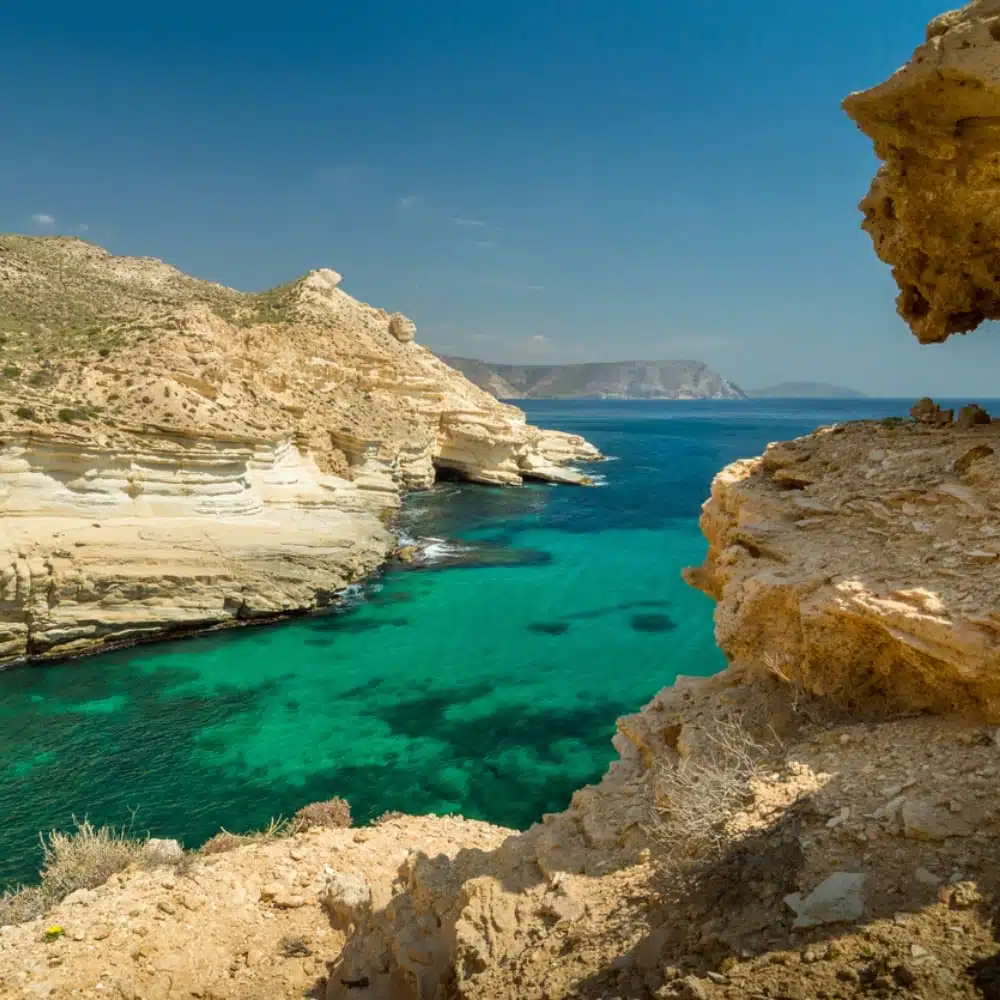
Visiting the white towns of Andalusia in Malaga
Perched on mountainsides surrounded by protective vegetation, you’ll spy clusters of squat, whitewashed houses crisscrossed by shaded, winding streets. These are the ‘pueblos blancos’ or the white towns of Andalusia, a collection of jealously preserved historical vestiges of a region marked by its dual Moorish and Christian heritage. Particularly numerous in the province of Malaga, they represent a pleasant alternative to the hustle and bustle of the neighbouring seaside resorts on the Costa del Sol. Ronda, famous for its suspension bridge linking two parts of the town, its arenas, its Arab baths and the Palace of the Moorish king, is undoubtedly one of the most spectacular sights on this tourist route, which winds its way through the white villages. The nearby village of Mijas, which has been popular with artists since the 1950s, is another highlight thanks to its majestic pine forest. Further east, in the province of Granada, Frigiliana exudes irresistible charm with its stunning views of the Mediterranean.
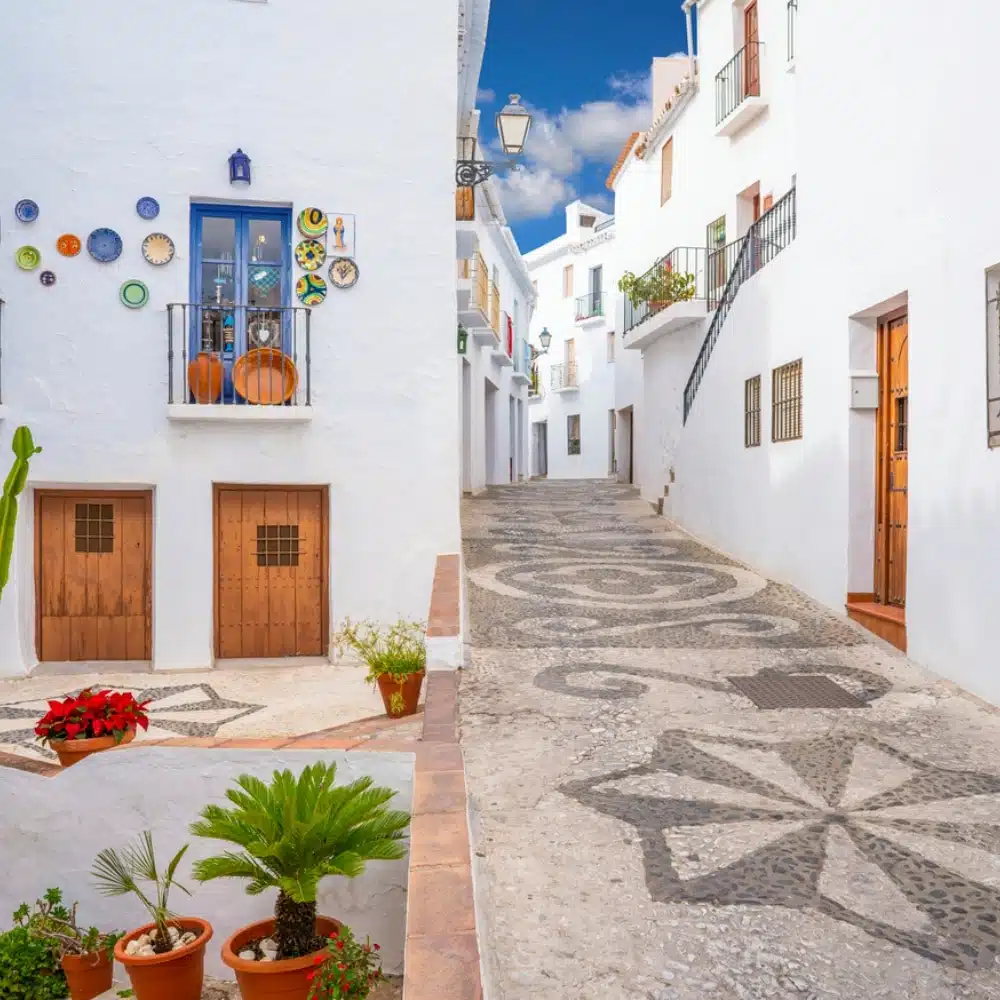
El Caminito del Rey: a dizzying prospect
In El Chorro in Malaga’s Sierra, there is a legendary trail located off the beaten track offering a dizzying walk that defies both imagination and gravity. Attached to the walls of the canyon of the Gaitanes Gorges, the Caminito del Rey is a pedestrian footpath made of wood, ropes and steel that stretches over more than three kilometres and culminates 300 metres above the gorges of the Guadalhorce River. Built at the very beginning of the 20th century to connect the villages in two districts, it owes its name to King Alfonso XIII, who boldly crossed it during a visit in 1921. Beyond its striking beauty, the part of the Los Ardales natural park that is traversed by the ‘Caminito’ offers hikers the opportunity to discover more than twenty caves, most of which are decorated with primitive paintings dating back to the Palaeolithic period.
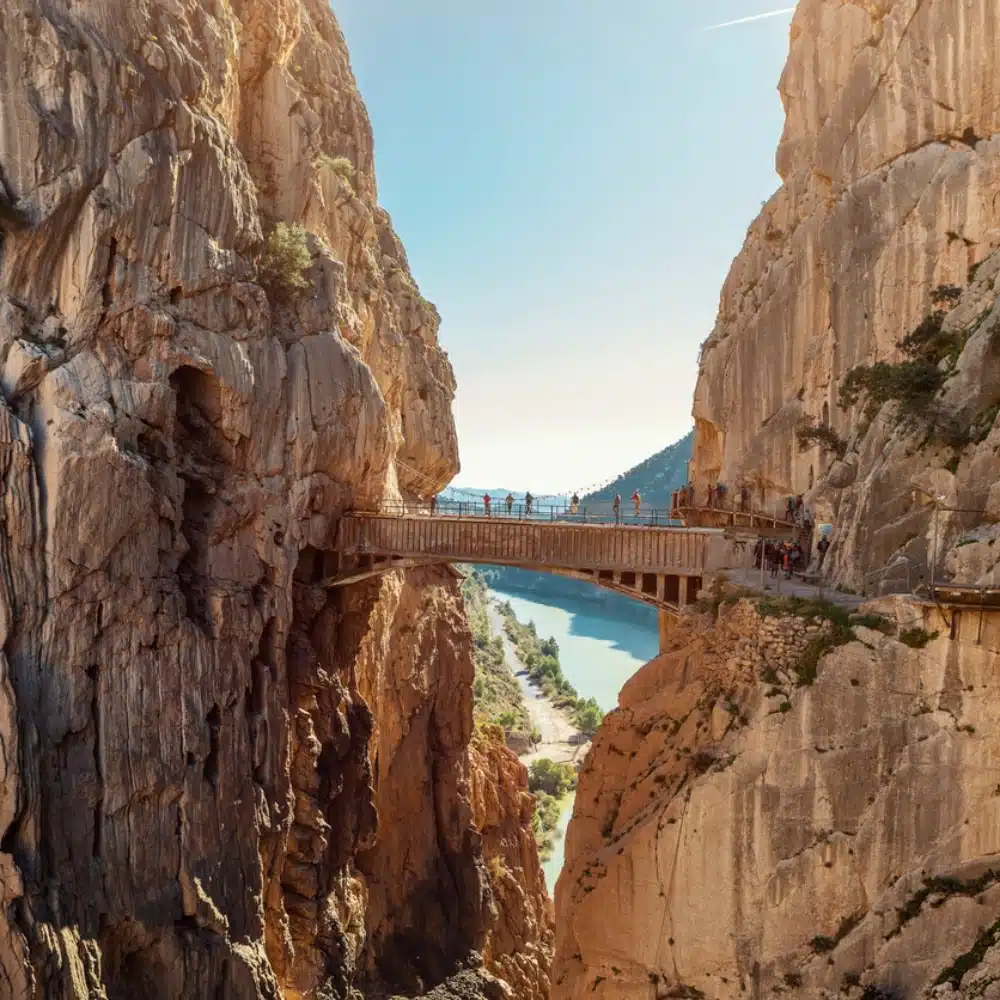
Beaches as nature intended: four sublimely wild beaches between Murcia and Malaga
The various regional natural parks dotted along the coast of south-eastern Spain boast a multitude of hidden beaches and coves, which have been protected from over-construction for the tourism industry and carefully developed by local authorities keen to showcase their natural heritage. If you can only fit four of them into your itinerary, we recommend first heading to Cartagena in the province of Murcia to enjoy the fine golden sand of Calblanque beach. Then, travel south to the Cabo de Gata-Nijar natural park and spread out your towel on the vast wild beach of Los Genoveses. Continuing south, you reach Gualchos on the ‘tropical’ coast of the province of Granada, where you can cool off in the crystalline waters of the charming La Rijana cove. Finally, in Nerja near Malaga, your stunning journey will come to an end at the hidden beach of Caleta de Maro, where a natural waterfall flows into the sea.
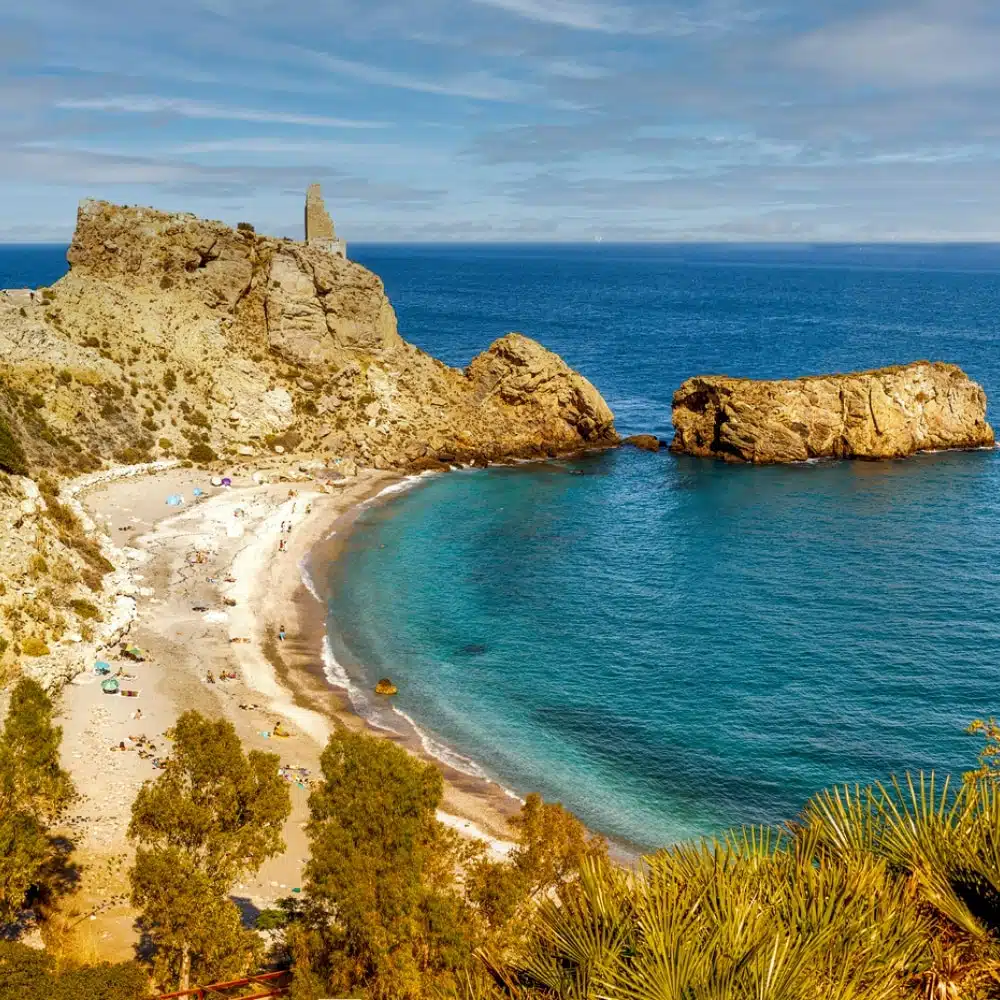
The Roman Forum in Cartagena and the Alhambra in Granada: a blend of heritage and history
A crossroads of Mediterranean and Muslim cultures, the heritage of southern Spain reflects the dual influences of the two main civilisations that have occupied it. In Cartagena, it is the imposing remains of the Roman Empire that give the city its identity. Further south in Granada, as in the rest of Andalusia, it is the imprint left by the domination of the kingdom of Al-Andalus that prevails, particularly at the unmissable Alhambra Palace.
Sierras and national parks in eastern Andalusia
Desert, mountains and sea… Eastern Andalusia is a land of contrasts with two important mountain ranges – the ‘Sierras’ – declared national natural parks. On the doorstep of Granada, the Sierra Nevada, whose alpine climate contrasts radically with the arid plains it overlooks, reaches its highest point at the peak of Mulhacèn, at nearly 3,500 metres of altitude. The mountain range is home to the highest ski resort in Spain and the southernmost in Europe. In the province of Malaga, the Sierra de las Nieves may have more modest altitudes, but it is still swept by snow every winter. Inhabited by a particularly varied wildlife, it has been recognised as a biosphere reserve by UNESCO since 1995.
Photos credits : © Istock
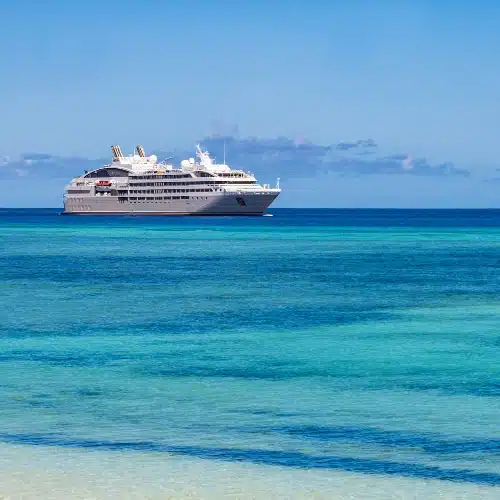
PONANT takes you there
Rediscover the shores of the Mediterranean from the sea



